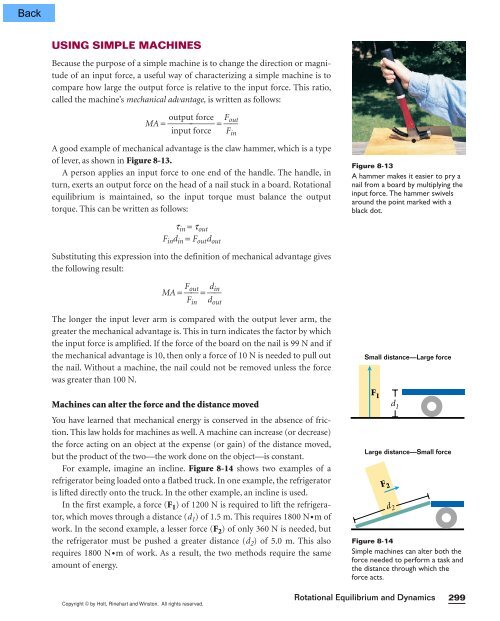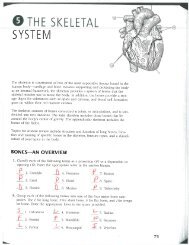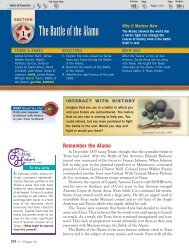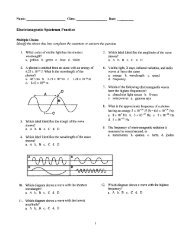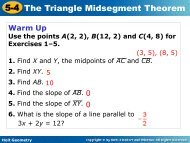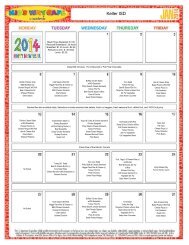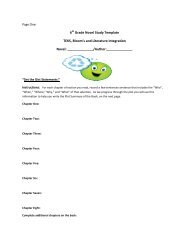Phys. Chapter 08 - Beau Chene High School Home Page
Phys. Chapter 08 - Beau Chene High School Home Page
Phys. Chapter 08 - Beau Chene High School Home Page
- No tags were found...
Create successful ePaper yourself
Turn your PDF publications into a flip-book with our unique Google optimized e-Paper software.
USING SIMPLE MACHINESBecause the purpose of a simple machine is to change the direction or magnitudeof an input force, a useful way of characterizing a simple machine is tocompare how large the output force is relative to the input force. This ratio,called the machine’s mechanical advantage, is written as follows:MA = ⎯ o utputforce⎯ = ⎯ F out⎯inputforceFinA good example of mechanical advantage is the claw hammer, which is a typeof lever, as shown in Figure 8-13.A person applies an input force to one end of the handle. The handle, inturn, exerts an output force on the head of a nail stuck in a board. Rotationalequilibrium is maintained, so the input torque must balance the outputtorque. This can be written as follows:Figure 8-13A hammer makes it easier to pry anail from a board by multiplying theinput force. The hammer swivelsaround the point marked with ablack dot.t in = t outF in d in = F out d outSubstituting this expression into the definition of mechanical advantage givesthe following result:MA = ⎯ F outdin⎯ = ⎯⎯Find outThe longer the input lever arm is compared with the output lever arm, thegreater the mechanical advantage is. This in turn indicates the factor by whichthe input force is amplified. If the force of the board on the nail is 99 N and ifthe mechanical advantage is 10, then only a force of 10 N is needed to pull outthe nail. Without a machine, the nail could not be removed unless the forcewas greater than 100 N.Machines can alter the force and the distance movedYou have learned that mechanical energy is conserved in the absence of friction.This law holds for machines as well. A machine can increase (or decrease)the force acting on an object at the expense (or gain) of the distance moved,but the product of the two—the work done on the object—is constant.For example, imagine an incline. Figure 8-14 shows two examples of arefrigerator being loaded onto a flatbed truck. In one example, the refrigeratoris lifted directly onto the truck. In the other example, an incline is used.In the first example, a force (F 1 ) of 1200 N is required to lift the refrigerator,which moves through a distance (d 1 ) of 1.5 m. This requires 1800 N •m ofwork. In the second example, a lesser force (F 2 ) of only 360 N is needed, butthe refrigerator must be pushed a greater distance (d 2 ) of 5.0 m. This alsorequires 1800 N •m of work. As a result, the two methods require the sameamount of energy.Small distance—Large forceF 1d 1Large distance—Small forceF 2d 2Figure 8-14Simple machines can alter both theforce needed to perform a task andthe distance through which theforce acts.Copyright © by Holt, Rinehart and Winston. All rights reserved.Rotational Equilibrium and Dynamics299


